GAME DESIGNER
Jan 2021 - Aug 2021
Neon Galaxy Strikers League
Platform: Roblox
Engine: Roblox Studio
Developer: Amber KO
Team size: 10
Duration: 7 months
Play it now on roblox!
Neon galaxy strikers league is a 3rd person perspective multiplayer capture the flag arena game. Handball meets overwatch. As a lead game designer I owned its design from pre-production to release.
Responsibilities
-
Market and user research
-
Develop game concept into design
-
Core game loop
-
Main mechanics
-
Special abilities
-
Game feel
-
Progression systems
-
Level design
-
First time user experience
Overview
In Amber Studio I worked as a lead designer in NGSL. I worked closely with the producer to ground the idea into a clear design. I was tasked with all of the design work, which was being supervised and mentored by the design department lead.
The goals for the project were:
-
Make a game that would serve as a portfolio piece for the studio; demonstrating what we are capable of designing and developing in the platform.
-
Develop a game that would generate enough engagement to plan for monetization.
-
Design a fast-paced competitive game with social mechanics that inspire cooperation and comradery.
-
Develop an exciting game to play, with an “easy to learn, hard to master” strategy. Easy to get into and dopamine-inducing gameplay appropriate for the platform audience.
-
Develop a design and development framework for original IP games in the roblox platform.
MKT & USR research (brief)
Deep diving into the platform, the following were important conclusions for our game:
-
The platform audience is extremely driven by social dynamics. This might be the most important key to success in the platform.
-
Light competitive games have a significantly large community on the platform and remain steady in popularity.
-
70% of sessions are played on mobile. Play sessions are short. First time player retention is very low.
-
60% of players are 14 and under. 40% are over 14. Roblox is looking to expand their audience to an older one and are investing on it.
-
A competitive game like capture the flag with abilities would be an innovation on the platform and could be well received.
%2019_33_50.png)
%2019_34_52.png)
%2019_35_12.png)
Core design pillars
The following pillars were the bases of our design. Design decisions would support this vision. Although not final and open to change (because fun works in mysterious ways) this helped us have a clear design path.
Fast-paced
The game should lead to moments of excitement quickly, such as fighting for the ball, stealing the ball, and scoring.
Cooperation
The social aspect in the platform is important. Cooperation should be rewarded with excitement and game advantage.
Skill
Thinking out of the box should lead to exciting combinations and epic moments for the players. The design should have enough freedom for this.
Main mechanics
Given the pillars of the game (fast-paced and skillful) we decided that the mechanics should be simple, consistent and reliable. This could also give space for the player-created dynamics to be more inventive. This also helped us test a prototype of the MVP to see if it was fun. If it was fun with the bare bones, everything else would only add up to it.
Pass
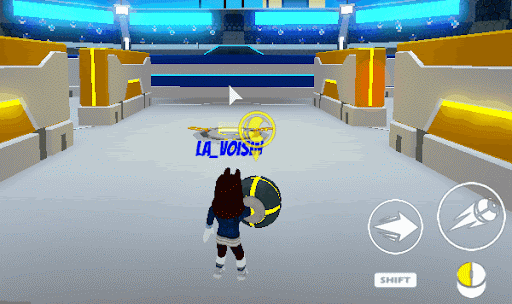
Dash
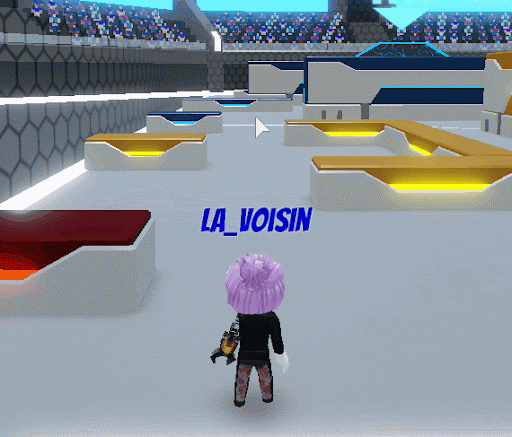
Steal
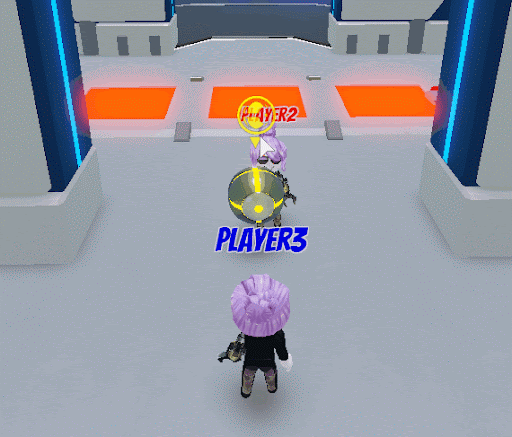
Special abilities
Following the cooperation pillar we decided to create special abilities that would pose advantages, disadvantages and affinities with the others (rock, paper, scissors). They were designed to be used with the main mechanics and other abilities to make fun and exciting combinations. We would design them for different styles of gameplay, which were skill, mobility and utility; Some would include a little bit of another style, but would focus on one of those three. This would also increase engagement and retention, since mastery of each ability would lead to fun, as shown in other games in the arena “genre”, such as overwatch or league of legends.
Hook
Hooks a player, or the ball if used with precision. This could be used to position teammates or pull opponents out of position.
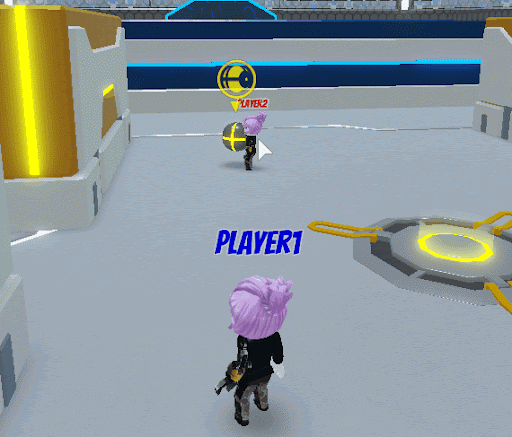
Rocket
Shoot an explosive projectile that would launch players into the air. Push teammates to the goal… or jump over walls if you shoot yourself…
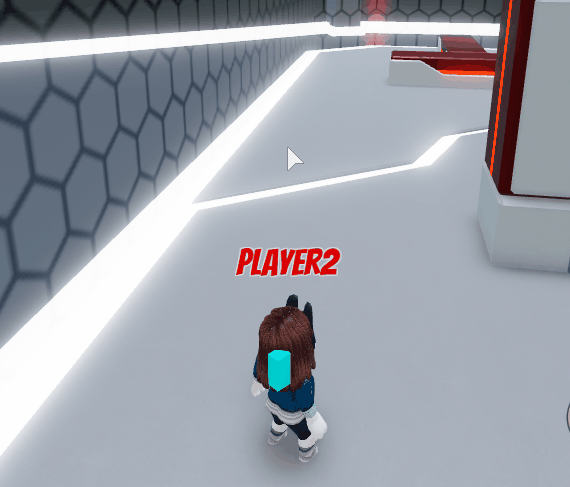
Slam
Knockback players and make opponents drop the ball. Push teammates to the goal or out of danger, steal the ball or defend your own goal.
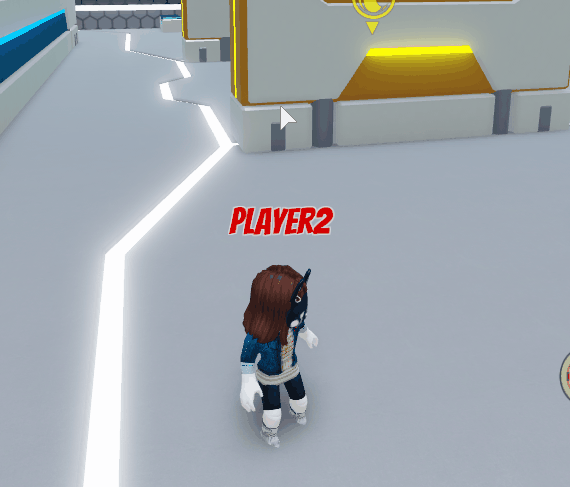
Players can only use their abilities when they don’t carry the ball… what special combinations can you think of?
Level Design
The maps were designed around the abilities and mechanics, noting the dynamics observed from playtests, keeping in mind the three design pillars. In this map, there are different levels of terrain that work well with certain abilities:
-
With an elevated terrain at the center, slam can push away opponents.
-
At the highest elevation, the rocket jump can reach the fastest.
-
The hook can pull opponents and teammates into positions that are difficult to get to.
-
Players can dash faster through platforms if timed correctly.
And most importantly, it has enough abstraction for more dynamics to be created. The map itself has a degree of mastery, which feeds engagement and retention.

Progression systems
In order to add an extra layer of retention and engagement, I designed progression systems that would help the player feel a sense of achievement and mastery in the meta-game. Given the “skill” pillar of the design, I chose to add cosmetics as part of the economy, instead of adding items that would give advantage to players with longer play times.
The level progression system and the economy were based on one similar to fall guys, with seasonal rewards. Each match would reward players with gold and xp points according to their performance. If the game continued to live-ops, we would expand on this feature.
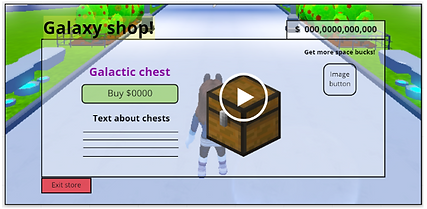%2020_08_33.png)
%2020_09_12.png)
%2020_06_32.png)
%2020_06_13.png)
%2020_08_43.png)
UI & UX
With the competitive nature of the game I considered very important to display visual and sound feedback to the players, this way they would have “unconscious” information of the environment of the game, its goals and the rewards outside of it. Some examples of this are:
-
Ability range and sound effects.
-
Indicators for the goal, teammate ability (this added value to cooperation) and ball position.
-
Mechanics and ability cooldown.
-
Experience and gold won (the latter after the match).
-
Score indicator.
Other UI & UX work is found in the store, menus and briefing screens. This was all built upon references of games with a similar nature (competitive, sports, f2p models) combined with platform conventionals from Roblox (since players are used to seeing and using certain kinds of GUIs and this removed the need to teach them so).
%2021_17_50.png)
%2021_40_04.png)
%2021_16_49.png)
%2021_17_39.png)
%2021_40_18.png)
Balancing and game feel
All of the mechanics and abilities were designed with parameters. This would help tweak the game to feel clear (coherence on feedback and outputs based on player inputs) and exciting. With playtest feedback and following design pillars, I tweaked these parameters throughout the development of the game.
%2021_44_11.png)
%2021_43_59.png)
Production
Throughout production of the game, I oversaw the development of the design. This would mean communicating clearly with developers, using references and clear visuals, with the help of wireframing tools and photo-editing software.
%2021_14_45.png)
%2021_13_58.png)
Post-mortem
What went right?
-
The game feels fast, coherent, fun, exciting.
-
Players discovered new ways of combining the abilities.
-
The developers had a clear understanding of documentation. If not, clarifying through a call and additional visuals was enough.
-
The game has a complete feel, with the simple progression system.
What went wrong?
-
The game did not have the user acquisition we hoped for.
-
Players would get frustrated waiting for other people to join a match.
-
The progression system couldn’t fully shine without the development of a better item store (deadlines and budget reduced the scope).
-
Given the performance of the game, with poor retention or acquisition because of our lack of community management, the budget was cut off and could not continue its development with more maps, items and special abilities, which would have made an even more exciting game and better product.
What have I learned?
-
Community management is just as important as development and good design.
-
In an upcoming multiplayer game, designing bots would have been a good option, so players don’t get frustrated waiting for a match, and still get a good experience out of the game. This could compensate the player acquisition speed at the beginning.
-
Playtesting is the easiest way to find out if a mechanic or feature is fun! I would get stuck thinking about how something didn’t have enough skill depth and be simple enough to be “fun”, only to discover a player would have a ton of fun as it is, or using it in an exciting way I hadn’t thought of.
